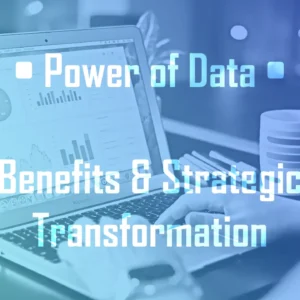Understanding Artificial Intelligence in Modern Workflows
Artificial intelligence (AI) has rapidly evolved to become a pivotal component in modern business environments. What was once a futuristic concept is now a tangible reality transforming workflows across various sectors. At its core, AI refers to the simulation of human intelligence in machines, enabling them to perform tasks that typically require human cognitive functions. Key technologies driving this transformation include machine learning, natural language processing (NLP), and data analytics.
Machine learning, a subset of AI, allows systems to learn and improve from experience without being explicitly programmed. It leverages algorithms and statistical models to analyze and interpret complex datasets, making predictions and decisions informed by data. This capability is essential for automating repetitive tasks and enhancing decision-making processes in business workflows. For instance, predictive maintenance in manufacturing and personalized marketing in retail are facilitated by machine learning.
Natural language processing (NLP) enables machines to understand and respond to human language. This technology underpins many AI tools into your communication workflow, such as chatbots and virtual assistants, which streamline customer service and improve employee productivity. By integrating AI tools into workflow communication, businesses can ensure more efficient and effective interactions both internally and externally.
Data analytics, another crucial aspect of AI, involves analyzing vast amounts of data to uncover patterns, correlations, and insights. This process supports data-driven decision making, which is increasingly fundamental in a competitive business landscape. By employing AI-driven data analytics, companies can optimize supply chains, refine marketing strategies, and anticipate market trends with greater accuracy.
The integration of AI workflow automation in business processes is not merely a technological upgrade but a strategic necessity. These advancements facilitate higher efficiency by reducing manual effort and minimizing errors, thereby leading to innovation and growth. As industries continue to embrace AI, the potential impact on productivity and operational excellence signals a transformative trajectory toward a more intelligent and dynamic future.
Key AI Tools Transforming Business Operations
The integration of AI tools into workflow processes has tremendously reshaped business operations, offering unparalleled efficiency and innovation. Among the notable AI-powered tools revolutionizing workflows are those dedicated to project management. AI-powered project management tools, such as Monday.com or Asana, leverage machine learning algorithms to predict project timelines, allocate resources dynamically, and identify bottlenecks. By automating these elements, businesses can ensure projects stay on track, mitigate risks, and optimize engagement levels across teams. This not only results in enhanced productivity but also significantly lowers operational costs.
In the realm of customer service, AI chatbots have become indispensable. Platforms like Drift and Intercom employ natural language processing (NLP) to handle customer inquiries, provide instant resolutions, and enhance user experiences. These chatbots can manage high volumes of queries simultaneously, offering 24/7 customer support without the need for human intervention. By integrating these AI tools into your communication workflow, companies can achieve faster response times, increased customer satisfaction, and a marked reduction in overhead costs associated with large customer service teams.
Automated scheduling software also makes a notable impact on business efficiency. Tools such as Calendly and Doodle, driven by AI scheduling algorithms, can sync across different calendar systems, propose meeting times based on participants’ availability, and send reminders. This optimizes time management across organizations, reduces scheduling conflicts, and enhances overall productivity.
Data analysis platforms powered by AI, like Tableau and Microsoft Power BI, transform how businesses perceive and interact with their data. By using sophisticated algorithms, these tools can analyze vast datasets, detect patterns, and generate actionable insights with precision. Integration of these AI tools into workflow facilitates data-driven decision-making, enabling businesses to adapt swiftly to market changes and optimize operational strategies.
Benefits of Integrating AI into Workflows
Integrating AI tools into workflow processes offers numerous advantages that can significantly transform business operations. One of the most notable benefits is increased efficiency. AI algorithms can handle repetitive tasks at a much faster rate than human workers, thus optimizing time and resources. For instance, a study by McKinsey & Company revealed that AI could increase productivity by up to 40%, allowing businesses to focus on more strategic initiatives.
Another significant advantage is the reduction of human error. AI systems can process large volumes of data with precision, ensuring that tasks are completed accurately. A report by IBM indicated that companies implementing AI workflow automation experienced a 30% decrease in error rates, resulting in higher quality outcomes. This reduction not only minimizes the risk of costly mistakes but also enhances compliance with regulatory standards.
Cost savings is another compelling factor driving the integration of AI tools into workflows. By automating routine tasks, businesses can cut down on labor costs. According to a Deloitte survey, companies that have adopted AI solutions report a 20-30% decrease in operational expenses. Furthermore, AI’s data-driven insights help in optimizing resource allocation, contributing to overall financial efficiency.
Enhanced decision-making capabilities are also a crucial benefit. AI tools are equipped with advanced analytics that can provide real-time insights and predictive analytics. This enables managers and executives to make informed decisions based on data rather than intuition. A PwC study found that 72% of business leaders credited AI with enabling more rapid and accurate decision-making processes.
Lastly, AI integration can greatly improve customer experiences. AI-powered chatbots and customer service platforms are available 24/7, providing timely and consistent customer interactions. For example, a case study from Gartner highlighted that companies using AI in customer service reported a 25% improvement in customer satisfaction scores.
By incorporating AI tools into workflow processes, businesses can unlock a multitude of benefits that range from operational efficiency to superior customer experiences. These statistics and case studies underscore the transformative potential of AI, illustrating its capacity to drive substantial improvements across various facets of an organization.
Challenges and Risks of AI Integration
While the integration of artificial intelligence tools into workflow automation can lead to substantial benefits, it is crucial to acknowledge the accompanying challenges and risks. One of the primary concerns revolves around data privacy. As AI systems require large volumes of data to function effectively, there is an inherent risk of data breaches and unauthorized access. Businesses must ensure robust data protection measures are in place to safeguard sensitive information and maintain customer trust.
Another significant issue is the potential for job displacement. The automation of repetitive tasks through AI tools can lead to reduced demand for certain roles, posing a threat to job security for many workers. Companies need to find a balance between automation and human employment, possibly by reskilling employees to fit into more strategic roles that AI cannot fulfill.
Continuous learning and adaptation are essential as AI technologies evolve rapidly. For optimal integration of AI tools into your communication workflow, businesses must invest in ongoing training and development for their workforce. This ensures that staff remains up-to-date with the latest advancements, enabling seamless adoption and effective utilization of AI systems.
Ethical considerations also play a vital role in AI decision-making processes. AI systems, when not properly designed or monitored, can inadvertently perpetuate biases and contribute to unfair practices. It is essential for organizations to implement ethical guidelines and maintain transparency in how AI decisions are made to avoid negative societal impacts.
These challenges and risks necessitate a strategic approach to integrating AI into workflow processes. By addressing data privacy, managing job displacement, fostering continuous learning, and upholding ethical standards, businesses can navigate the complexities of AI integration while leveraging its potential to enhance efficiency and drive innovation.
Steps to Successfully Integrate AI Tools
The journey toward integrating AI tools into a workflow begins with a thorough initial assessment and planning phase. This step involves evaluating both current workflows and identifying areas where AI can bring the most value. By conducting a gap analysis, businesses can pinpoint inefficiencies and unmet needs. This foundational insight is crucial for setting clear goals and objectives for the AI integration process.
Selecting the right AI tools is the next critical step. Businesses must explore and compare various AI solutions, considering factors such as ease of integration, scalability, and cost. It is essential to choose AI tools that align well with the organization’s infrastructure and future scalability plans. Engaging with vendors, seeking demos, and reading reviews can provide valuable insights to aid in the decision-making process.
Employee training is another pivotal component of successful AI tool integration. As AI technologies can be complex, comprehensive training programs are necessary to ensure that staff are comfortable and proficient with new tools. This training should be ongoing and include workshops, e-learning modules, and hands-on sessions. By empowering employees with the knowledge and skills needed to leverage AI tools effectively, businesses can foster a culture of continuous improvement and innovation.
Before a full-scale rollout, pilot testing the selected AI tools within a controlled environment is highly recommended. This allows businesses to evaluate the tools in real-world scenarios, gather feedback, and make necessary adjustments. Pilot testing also provides an opportunity to identify and mitigate potential issues that could disrupt broader implementation. Iterative testing and refinement during this phase are essential for smoothing out any operational kinks.
Once pilot testing is successfully completed, full-scale implementation can proceed. This involves deploying the AI tools across the organization, ensuring that all stakeholders are aligned and supportive. To facilitate a smooth transition, it is prudent to phase the implementation, starting with non-critical operations and gradually expanding. Continuous monitoring and optimization are key during this stage to ensure that the AI tools are delivering the expected benefits and to make further adjustments as needed.
To navigate common challenges, businesses should adopt best practices such as maintaining clear communication channels, fostering collaboration between IT and operational teams, and regularly reviewing performance metrics. Addressing resistance to change by involving employees in the process and demonstrating the tangible benefits of AI is equally important. By adhering to these steps and best practices, businesses can successfully integrate AI tools into their workflows, driving efficiency and fostering a culture of innovation.
Case Studies of Successful AI Integration
Integrating AI tools into workflow is becoming increasingly essential for businesses aiming to enhance efficiency and drive innovation. Numerous organizations across different industries have embarked on this journey, yielding notable results. Here, we examine a few exemplary case studies that highlight the practical benefits of AI workflow automation, detailing the tools utilized, implementation processes, encountered challenges, and the resultant outcomes.
One prominent case is that of General Electric (GE). The company leveraged AI tools to optimize their manufacturing processes. By integrating AI-driven predictive maintenance systems into their workflow, GE was able to foresee equipment failures before they occurred. The implementation involved deploying sensors and AI algorithms to analyze real-time data. Despite initial challenges related to data integration and workforce training, the project substantially reduced downtime and maintenance costs, ultimately enhancing operational efficiency.
Another notable example is IBM’s use of AI tools in streamlining their communication workflow. IBM adopted natural language processing (NLP) and machine learning (ML) algorithms to automate customer support functions. The transition involved the integration of chatbots powered by AI, capable of handling a wide array of customer inquiries. While IBM faced challenges in ensuring the accuracy and reliability of the AI responses, addressing these through iterative testing and refinements led to improved customer satisfaction and significant cost savings.
In the financial services sector, JPMorgan Chase utilized AI tools to enhance fraud detection. By incorporating machine learning models into their workflow, the bank could analyze vast amounts of transaction data to identify suspicious activities. The primary challenge encountered was the complexity of integrating AI with existing legacy systems. Through strategic planning and phased integration, the AI tools swiftly identified fraudulent transactions, reducing risk and enhancing security.
These case studies underscore the practical benefits of integrating AI tools into workflow. Whether enhancing manufacturing processes, streamlining communication workflows, or bolstering security measures, the advantages of AI-driven innovation are clear. These real-world examples provide valuable insights for businesses seeking to undertake their own AI integration projects, highlighting both the potential difficulties and the significant rewards of successful AI implementation.
The Future of AI in Workflows
The rapid evolution of artificial intelligence (AI) is set to revolutionize business workflows in unprecedented ways. As AI algorithms become more advanced, we can anticipate higher levels of efficiency and innovation across various industries. A key trend will be the increasing sophistication of AI algorithms, which will enable more accurate predictions and smarter decision-making. Such advancements are likely to fuel the development of more personalized and customizable AI tools, tailored to meet specific organizational needs.
In the realm of workflow automation, integrating AI tools into workflows will transform mundane and repetitive tasks, allowing human employees to focus on higher-value activities. This shift not only boosts productivity but also promotes a more engaging and fulfilling work experience. Organizations adopting AI workflow automation will find themselves better equipped to adapt to changing market conditions and customer expectations.
Furthermore, AI’s role in facilitating remote and hybrid work environments cannot be overstated. As businesses increasingly adopt flexible work models, AI-powered communication and collaboration tools will play a critical role in maintaining seamless interaction and efficient operational flow. Tools that leverage natural language processing (NLP), for instance, can enhance digital communication by providing real-time language translation, sentiment analysis, and automated responses, thereby bridging gaps across diverse teams.
Industry experts unanimously agree on the transformative potential of AI in workflows. According to a recent survey by McKinsey & Company, more than 60% of executives plan to invest in AI technologies to drive business growth and innovation. Experts predict that we will see a significant rise in AI-driven business intelligence tools, which will provide deeper insights and foster data-driven decision-making.
As we look ahead, it is apparent that the integration of AI tools into business workflows will be essential for staying competitive and achieving long-term success. Embracing these technologies will not only enhance operational efficiency but also open up new avenues for innovation and strategic advantage.
Conclusion: Embracing AI for a Competitive Edge
As we have explored throughout this blog post, the integration of AI tools into business workflows can significantly enhance efficiency and drive innovation. By automating repetitive and time-consuming tasks, AI frees up valuable human resources, allowing them to focus on more strategic and creative endeavors. The utilization of AI workflow automation can optimize operations, reduce human errors, and lead to more informed decision-making processes.
Today’s competitive business landscape necessitates the adoption of cutting-edge technologies. Companies that successfully integrate AI tools into their workflows are likely to experience substantial advantages over those that do not. This includes improved productivity, cost savings, and the capability to swiftly adapt to changing market conditions. AI tools can also enhance your communication workflow by automating routine correspondence, managing customer interactions, and providing real-time data analytics, thereby facilitating smoother and more effective communication channels.
However, the road to successful AI integration requires an informed and strategic approach. It is crucial to conduct thorough research to identify the AI solutions that best meet the specific needs of your industry. Investing in employee training and creating a culture that is open to technological advancements are also imperative steps in ensuring seamless integration. Interdepartmental collaboration and clear communication about the benefits and expected outcomes of AI adoption can further reinforce the positive impact of these tools.
Businesses must start their AI integration journey with a clear understanding of their goals and the potential challenges they may face. By doing so, they can craft a roadmap that ensures a smooth and beneficial transition. In conclusion, embracing AI technology is not merely an option but a necessity for maintaining a competitive edge in today’s fast-paced market. We encourage all organizations to begin exploring AI tools tailored to their unique needs and to take the first step towards revolutionizing their workflows with AI.




Leave a Reply